Are you over 18 and want to see adult content?
More Annotations

A complete backup of https://temptraq.com
Are you over 18 and want to see adult content?

A complete backup of https://cpaquebec.ca
Are you over 18 and want to see adult content?

A complete backup of https://michaelbuble.com
Are you over 18 and want to see adult content?

A complete backup of https://arbico.co.uk
Are you over 18 and want to see adult content?

A complete backup of https://britishessaywriter.org.uk
Are you over 18 and want to see adult content?

A complete backup of https://charlestonpalmettopediatrics.com
Are you over 18 and want to see adult content?

A complete backup of https://essaywriting.ae
Are you over 18 and want to see adult content?
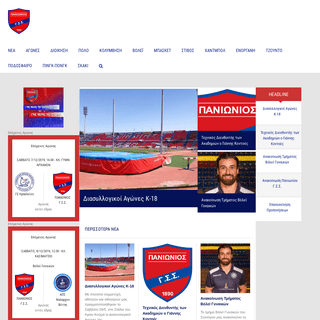
A complete backup of https://panionios.gr
Are you over 18 and want to see adult content?

A complete backup of https://pandora-jewelry.me.uk
Are you over 18 and want to see adult content?
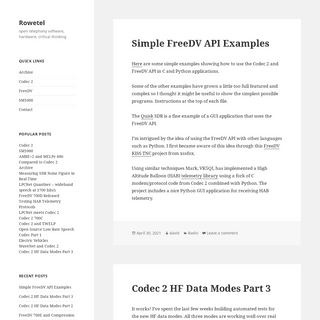
A complete backup of https://rowetel.com
Are you over 18 and want to see adult content?
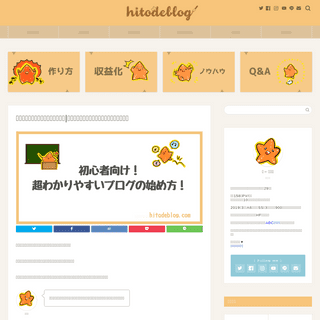
A complete backup of https://hitodeblog.com
Are you over 18 and want to see adult content?
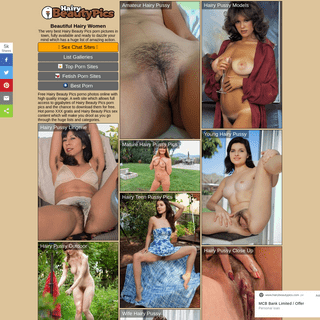
A complete backup of https://hairybeautypics.com
Are you over 18 and want to see adult content?
Favourite Annotations

A complete backup of https://curriculumredesign.org
Are you over 18 and want to see adult content?
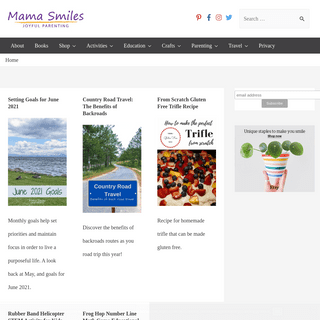
A complete backup of https://mamasmiles.com
Are you over 18 and want to see adult content?

A complete backup of https://wedding-spot.com
Are you over 18 and want to see adult content?

A complete backup of https://adventurehiking.com
Are you over 18 and want to see adult content?

A complete backup of https://wnycstudios.org
Are you over 18 and want to see adult content?

A complete backup of https://fairgroundsracecourse.com
Are you over 18 and want to see adult content?
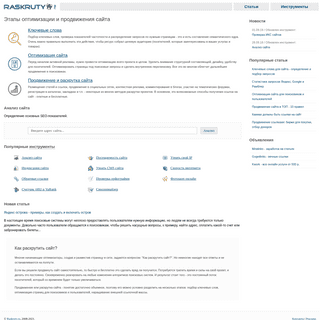
A complete backup of https://raskruty.ru
Are you over 18 and want to see adult content?
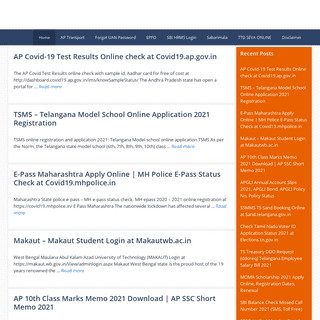
A complete backup of https://apeamcet.org
Are you over 18 and want to see adult content?

A complete backup of https://alternativemovieposters.com
Are you over 18 and want to see adult content?
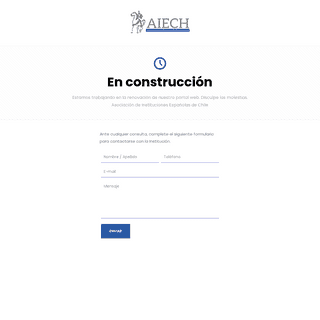
A complete backup of https://aiech.cl
Are you over 18 and want to see adult content?

A complete backup of https://certik.org
Are you over 18 and want to see adult content?
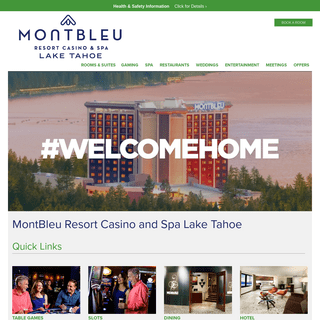
A complete backup of https://ballyslaketahoe.com
Are you over 18 and want to see adult content?
Text
MAPUDUNGUN
Alternative Names: Mapudungu, Mapuche, Araucanian.. Name Origin: Mapudungun means in this tongue ‘language of the land’, from mapu ('land') and dungun ('language'). Mapu-che, 'people of the land' is the self-designation of the indigenous community which is also used (less correctly) as the name of their language.Araucanian derives from Arauco, the name of a region whose etymology is uncertain. TATAR - LANGUAGESGULPER.COM Tatar is the product of complex linguistic and historical processes. Turkic-speaking peoples arrived in the middle Volga River region from the 5th century CE and in the 9th century the Volga Bulgar state was founded. It was destroyed by the Mongols of the Golden Horde who created a Khanate in 1237. KHOTANESE - LANGUAGESGULPER.COM Consonants (40).One distinguishing feature of Khotanese is the presence of retroflex consonants, absent in other Middle Indo-Iranian languages. The other main places of articulation were labial, dental-alveolar, palatal, and velar. PUNJABI - LANGUAGESGULPER.COM Punjabi is a regional language of Pakistan and northwestern India. It stemmed from the medieval Prakrit language Shauraseni, at the dawn of the second millennium CE. Its territory is the Panjab, a region of alluvial plains irrigated by the five great tributaries of the IndusRiver.
ZULU - LANGUAGESGULPER.COM Tones: like most Bantu languages, Zulu is a tonal one.It has just two tones, high and low. Stress: usually falls on the penultimate syllable.. Script and Orthography.. Zulu is written with a 26 letter Latin alphabet, identical to that of English.TELUGU
Telugu is the largest Dravidian language and one of the most important regional languages of India. Less conservative than Tamil, its sound system and lexicon have been deeply influenced by the Indo-Aryan languages of north and central India. It is agglutinative, adding suffixes to nominal and verbal stems to indicate grammaticalcategories
UKRAINIAN - LANGUAGESGULPER.COM Ukrainian is an East Slavic language that descends from the vernacular spoken in the first Slavic state (10th-13th centuries), centered in Kiev, emerging as a distinctive language towards the 13th century. It is, with Polish, the second largest Slavic language. ARMENIAN - LANGUAGESGULPER.COM Armenian is the language of the Armenian people who arrived in Anatolia at an unknown date, probably in the late second millennium BCE. At the beginning of the sixth century BCE they became the successors of the Urartians, a non-Indo-European people that have settled the areas surrounding Lakes Van, Urmia and Sevan in northeastern Anatolia KIRGHIZ - MAIL.LANGUAGESGULPER.COM Kirghiz is a member of the Turkic family. The external classification of Turkic is disputed. Many consider it one of the three divisions of the Altaic phylum but for others its relationship with Tungusic and Mongolic is not proven. Kirghiz belongs to the southern group of the Kipchak branch along with Kazakh, Karakalpak, Kipchak Uzbek, andNogai.
THE LARGEST LANGUAGES OF THE WORLD The Largest Languages of the World. This a list of more than thirty world languages that have the largest number of native speakers (in millions). It is based on three different estimates: our own (Gulper 2013), those of the Swedish encyclopedia Nationalencyklopedin (NE 2007), and those of the Ethnologue.. Our estimates are based on the most recent available data updated to the current yearMAPUDUNGUN
Alternative Names: Mapudungu, Mapuche, Araucanian.. Name Origin: Mapudungun means in this tongue ‘language of the land’, from mapu ('land') and dungun ('language'). Mapu-che, 'people of the land' is the self-designation of the indigenous community which is also used (less correctly) as the name of their language.Araucanian derives from Arauco, the name of a region whose etymology is uncertain. TATAR - LANGUAGESGULPER.COM Tatar is the product of complex linguistic and historical processes. Turkic-speaking peoples arrived in the middle Volga River region from the 5th century CE and in the 9th century the Volga Bulgar state was founded. It was destroyed by the Mongols of the Golden Horde who created a Khanate in 1237. KHOTANESE - LANGUAGESGULPER.COM Consonants (40).One distinguishing feature of Khotanese is the presence of retroflex consonants, absent in other Middle Indo-Iranian languages. The other main places of articulation were labial, dental-alveolar, palatal, and velar. PUNJABI - LANGUAGESGULPER.COM Punjabi is a regional language of Pakistan and northwestern India. It stemmed from the medieval Prakrit language Shauraseni, at the dawn of the second millennium CE. Its territory is the Panjab, a region of alluvial plains irrigated by the five great tributaries of the IndusRiver.
ZULU - LANGUAGESGULPER.COM Tones: like most Bantu languages, Zulu is a tonal one.It has just two tones, high and low. Stress: usually falls on the penultimate syllable.. Script and Orthography.. Zulu is written with a 26 letter Latin alphabet, identical to that of English.TELUGU
Telugu is the largest Dravidian language and one of the most important regional languages of India. Less conservative than Tamil, its sound system and lexicon have been deeply influenced by the Indo-Aryan languages of north and central India. It is agglutinative, adding suffixes to nominal and verbal stems to indicate grammaticalcategories
UKRAINIAN - LANGUAGESGULPER.COM Ukrainian is an East Slavic language that descends from the vernacular spoken in the first Slavic state (10th-13th centuries), centered in Kiev, emerging as a distinctive language towards the 13th century. It is, with Polish, the second largest Slavic language. ARMENIAN - LANGUAGESGULPER.COM Armenian is the language of the Armenian people who arrived in Anatolia at an unknown date, probably in the late second millennium BCE. At the beginning of the sixth century BCE they became the successors of the Urartians, a non-Indo-European people that have settled the areas surrounding Lakes Van, Urmia and Sevan in northeastern Anatolia KIRGHIZ - MAIL.LANGUAGESGULPER.COM Kirghiz is a member of the Turkic family. The external classification of Turkic is disputed. Many consider it one of the three divisions of the Altaic phylum but for others its relationship with Tungusic and Mongolic is not proven. Kirghiz belongs to the southern group of the Kipchak branch along with Kazakh, Karakalpak, Kipchak Uzbek, andNogai.
THE LARGEST LANGUAGES OF THE WORLD The Largest Languages of the World. This a list of more than thirty world languages that have the largest number of native speakers (in millions). It is based on three different estimates: our own (Gulper 2013), those of the Swedish encyclopedia Nationalencyklopedin (NE 2007), and those of the Ethnologue.. Our estimates are based on the most recent available data updated to the current yearTELUGU
Telugu is the largest Dravidian language and one of the most important regional languages of India. Less conservative than Tamil, its sound system and lexicon have been deeply influenced by the Indo-Aryan languages of north and central India. It is agglutinative, adding suffixes to nominal and verbal stems to indicate grammaticalcategories
DINKA - LANGUAGESGULPER.COM Dinka is very close to Nuer, spoken to the east of the Dinka area, and is also related to Luo. Overview. The Dinka are the largest ethnic group of South Sudan and, before its independence, their language was, with several million speakers, the most numerous of the approximately one-hundred native languages of AMHARIC - LANGUAGESGULPER.COM The first Ethiopic script was conceived for Ge'ez around the 4th century CE. It was based on the South Arabian consonantal alphabet of Yemen. The Amharic script called fidäl ('letter'), containing 33 basic symbols, is an offshoot of it. In contrast to other Semitic languages, it is written from left to right and vowels are represented, though not as an independent form. ZULU - LANGUAGESGULPER.COM Tones: like most Bantu languages, Zulu is a tonal one.It has just two tones, high and low. Stress: usually falls on the penultimate syllable.. Script and Orthography.. Zulu is written with a 26 letter Latin alphabet, identical to that of English.BANTU
The Bantu languages are a very large group, belonging to the Benue-Congo family of the Niger-Congo phylum, which comprises between 250 to 500 members spread over most of sub-Saharan Africa. They are spoken by nearly one-third of the population of the continent, approximately 330 million people. KANNADA - LANGUAGESGULPER.COM Alternative Names: Kanarese, Canarese.. Classification. Dravidian, Southern Dravidian.Other major South Dravidian languages are Tamil and Malayalam. Overview. With more than forty million speakers, Kannada is an important regional language of South India and the third largest of the Dravidian family, after Tamil and Telugu.Kannada, which has its own script and an outstanding literature, isBASQUE LANGUAGE
In Guipúzcoa, Basque is the maternal language of more than one-third of its population, in Vizcaya of 13 % and in Álava (where is only spoken in the north) of 4 %. In medieval times, Basque was also spoken further south, in La Rioja and Burgos. In France, it is spoken in the western half of the Département des Pyrénées-Atlantiques. Speakers. ARMENIAN - LANGUAGESGULPER.COM Armenian is the language of the Armenian people who arrived in Anatolia at an unknown date, probably in the late second millennium BCE. At the beginning of the sixth century BCE they became the successors of the Urartians, a non-Indo-European people that have settled the areas surrounding Lakes Van, Urmia and Sevan in northeastern Anatolia FARSI - LANGUAGESGULPER.COM Alternative Names: New Persian, Farsi.. Classification: I ndo-European, Indo-Iranian, Iranian, Southwestern Iranian.. Overview. Modern Persian or New Persian is a descendant of Old Persian, the official language of the Achaemenid dynasty, and of Middle Persian (Pahlavi), the official language of the Sassanian dynasty.Persian originated in the Iranian province of Fars (Pars) in southwest Iran THE LARGEST LANGUAGES OF THE WORLD The Largest Languages of the World. This a list of more than thirty world languages that have the largest number of native speakers (in millions). It is based on three different estimates: our own (Gulper 2013), those of the Swedish encyclopedia Nationalencyklopedin (NE 2007), and those of the Ethnologue.. Our estimates are based on the most recent available data updated to the current yearMAPUDUNGUN
Alternative Names: Mapudungu, Mapuche, Araucanian.. Name Origin: Mapudungun means in this tongue ‘language of the land’, from mapu ('land') and dungun ('language'). Mapu-che, 'people of the land' is the self-designation of the indigenous community which is also used (less correctly) as the name of their language.Araucanian derives from Arauco, the name of a region whose etymology is uncertain. KHOTANESE - LANGUAGESGULPER.COM Consonants (40).One distinguishing feature of Khotanese is the presence of retroflex consonants, absent in other Middle Indo-Iranian languages. The other main places of articulation were labial, dental-alveolar, palatal, and velar. PUNJABI - LANGUAGESGULPER.COM Punjabi is a regional language of Pakistan and northwestern India. It stemmed from the medieval Prakrit language Shauraseni, at the dawn of the second millennium CE. Its territory is the Panjab, a region of alluvial plains irrigated by the five great tributaries of the IndusRiver.
TELUGU
Telugu is the largest Dravidian language and one of the most important regional languages of India. Less conservative than Tamil, its sound system and lexicon have been deeply influenced by the Indo-Aryan languages of north and central India. It is agglutinative, adding suffixes to nominal and verbal stems to indicate grammaticalcategories
ARMENIAN - LANGUAGESGULPER.COM Armenian is the language of the Armenian people who arrived in Anatolia at an unknown date, probably in the late second millennium BCE. At the beginning of the sixth century BCE they became the successors of the Urartians, a non-Indo-European people that have settled the areas surrounding Lakes Van, Urmia and Sevan in northeastern Anatolia UKRAINIAN - LANGUAGESGULPER.COM Ukrainian is an East Slavic language that descends from the vernacular spoken in the first Slavic state (10th-13th centuries), centered in Kiev, emerging as a distinctive language towards the 13th century. It is, with Polish, the second largest Slavic language. AINU - LANGUAGESGULPER.COM Ainu is a polysynthetic language. Polysynthesis is the capacity of building long and complex words by the successive addition to a root of several morphemes. As a result, a single word may function, sometimes, as a whole sentence. Literary Ainu is more polysynthetic than the colloquial language, adding affixes (mostly prefixes) to theroot.
CHUVASH - LANGUAGESGULPER.COM Chuvash is a member of the Turkic family. The external classification of Turkic is disputed. Many consider it one of the three divisions of the Altaic phylum (the other two are Tungusic and Mongolic ). However, the parallelisms between Turkic, Mongolic and Tungusic are too few, according to others, to support the unity of Altaic. Chuvash is the KIRGHIZ - MAIL.LANGUAGESGULPER.COM Kirghiz is a member of the Turkic family. The external classification of Turkic is disputed. Many consider it one of the three divisions of the Altaic phylum but for others its relationship with Tungusic and Mongolic is not proven. Kirghiz belongs to the southern group of the Kipchak branch along with Kazakh, Karakalpak, Kipchak Uzbek, andNogai.
THE LARGEST LANGUAGES OF THE WORLD The Largest Languages of the World. This a list of more than thirty world languages that have the largest number of native speakers (in millions). It is based on three different estimates: our own (Gulper 2013), those of the Swedish encyclopedia Nationalencyklopedin (NE 2007), and those of the Ethnologue.. Our estimates are based on the most recent available data updated to the current yearMAPUDUNGUN
Alternative Names: Mapudungu, Mapuche, Araucanian.. Name Origin: Mapudungun means in this tongue ‘language of the land’, from mapu ('land') and dungun ('language'). Mapu-che, 'people of the land' is the self-designation of the indigenous community which is also used (less correctly) as the name of their language.Araucanian derives from Arauco, the name of a region whose etymology is uncertain. KHOTANESE - LANGUAGESGULPER.COM Consonants (40).One distinguishing feature of Khotanese is the presence of retroflex consonants, absent in other Middle Indo-Iranian languages. The other main places of articulation were labial, dental-alveolar, palatal, and velar. PUNJABI - LANGUAGESGULPER.COM Punjabi is a regional language of Pakistan and northwestern India. It stemmed from the medieval Prakrit language Shauraseni, at the dawn of the second millennium CE. Its territory is the Panjab, a region of alluvial plains irrigated by the five great tributaries of the IndusRiver.
TELUGU
Telugu is the largest Dravidian language and one of the most important regional languages of India. Less conservative than Tamil, its sound system and lexicon have been deeply influenced by the Indo-Aryan languages of north and central India. It is agglutinative, adding suffixes to nominal and verbal stems to indicate grammaticalcategories
ARMENIAN - LANGUAGESGULPER.COM Armenian is the language of the Armenian people who arrived in Anatolia at an unknown date, probably in the late second millennium BCE. At the beginning of the sixth century BCE they became the successors of the Urartians, a non-Indo-European people that have settled the areas surrounding Lakes Van, Urmia and Sevan in northeastern Anatolia UKRAINIAN - LANGUAGESGULPER.COM Ukrainian is an East Slavic language that descends from the vernacular spoken in the first Slavic state (10th-13th centuries), centered in Kiev, emerging as a distinctive language towards the 13th century. It is, with Polish, the second largest Slavic language. AINU - LANGUAGESGULPER.COM Ainu is a polysynthetic language. Polysynthesis is the capacity of building long and complex words by the successive addition to a root of several morphemes. As a result, a single word may function, sometimes, as a whole sentence. Literary Ainu is more polysynthetic than the colloquial language, adding affixes (mostly prefixes) to theroot.
CHUVASH - LANGUAGESGULPER.COM Chuvash is a member of the Turkic family. The external classification of Turkic is disputed. Many consider it one of the three divisions of the Altaic phylum (the other two are Tungusic and Mongolic ). However, the parallelisms between Turkic, Mongolic and Tungusic are too few, according to others, to support the unity of Altaic. Chuvash is the KIRGHIZ - MAIL.LANGUAGESGULPER.COM Kirghiz is a member of the Turkic family. The external classification of Turkic is disputed. Many consider it one of the three divisions of the Altaic phylum but for others its relationship with Tungusic and Mongolic is not proven. Kirghiz belongs to the southern group of the Kipchak branch along with Kazakh, Karakalpak, Kipchak Uzbek, andNogai.
THE LARGEST LANGUAGES OF THE WORLD The Largest Languages of the World. This a list of more than thirty world languages that have the largest number of native speakers (in millions). It is based on three different estimates: our own (Gulper 2013), those of the Swedish encyclopedia Nationalencyklopedin (NE 2007), and those of the Ethnologue.. Our estimates are based on the most recent available data updated to the current yearTELUGU
Telugu is the largest Dravidian language and one of the most important regional languages of India. Less conservative than Tamil, its sound system and lexicon have been deeply influenced by the Indo-Aryan languages of north and central India. It is agglutinative, adding suffixes to nominal and verbal stems to indicate grammaticalcategories
DINKA - LANGUAGESGULPER.COM Dinka is very close to Nuer, spoken to the east of the Dinka area, and is also related to Luo. Overview. The Dinka are the largest ethnic group of South Sudan and, before its independence, their language was, with several million speakers, the most numerous of the approximately one-hundred native languages of ZULU - LANGUAGESGULPER.COM Tones: like most Bantu languages, Zulu is a tonal one.It has just two tones, high and low. Stress: usually falls on the penultimate syllable.. Script and Orthography.. Zulu is written with a 26 letter Latin alphabet, identical to that of English.BANTU
The Bantu languages are a very large group, belonging to the Benue-Congo family of the Niger-Congo phylum, which comprises between 250 to 500 members spread over most of sub-Saharan Africa. They are spoken by nearly one-third of the population of the continent, approximately 330 million people. KANNADA - LANGUAGESGULPER.COM Alternative Names: Kanarese, Canarese.. Classification. Dravidian, Southern Dravidian.Other major South Dravidian languages are Tamil and Malayalam. Overview. With more than forty million speakers, Kannada is an important regional language of South India and the third largest of the Dravidian family, after Tamil and Telugu.Kannada, which has its own script and an outstanding literature, is ARMENIAN - LANGUAGESGULPER.COM Armenian is the language of the Armenian people who arrived in Anatolia at an unknown date, probably in the late second millennium BCE. At the beginning of the sixth century BCE they became the successors of the Urartians, a non-Indo-European people that have settled the areas surrounding Lakes Van, Urmia and Sevan in northeastern Anatolia FARSI - LANGUAGESGULPER.COM Alternative Names: New Persian, Farsi.. Classification: I ndo-European, Indo-Iranian, Iranian, Southwestern Iranian.. Overview. Modern Persian or New Persian is a descendant of Old Persian, the official language of the Achaemenid dynasty, and of Middle Persian (Pahlavi), the official language of the Sassanian dynasty.Persian originated in the Iranian province of Fars (Pars) in southwest Iran CHUVASH - LANGUAGESGULPER.COM Chuvash is a member of the Turkic family. The external classification of Turkic is disputed. Many consider it one of the three divisions of the Altaic phylum (the other two are Tungusic and Mongolic ). However, the parallelisms between Turkic, Mongolic and Tungusic are too few, according to others, to support the unity of Altaic. Chuvash is the AINU - LANGUAGESGULPER.COM Ainu is a polysynthetic language. Polysynthesis is the capacity of building long and complex words by the successive addition to a root of several morphemes. As a result, a single word may function, sometimes, as a whole sentence. Literary Ainu is more polysynthetic than the colloquial language, adding affixes (mostly prefixes) to theroot.
THE LARGEST LANGUAGES OF THE WORLD The Largest Languages of the World. This a list of more than thirty world languages that have the largest number of native speakers (in millions). It is based on three different estimates: our own (Gulper 2013), those of the Swedish encyclopedia Nationalencyklopedin (NE 2007), and those of the Ethnologue.. Our estimates are based on the most recent available data updated to the current yearMAPUDUNGUN
Alternative Names: Mapudungu, Mapuche, Araucanian.. Name Origin: Mapudungun means in this tongue ‘language of the land’, from mapu ('land') and dungun ('language'). Mapu-che, 'people of the land' is the self-designation of the indigenous community which is also used (less correctly) as the name of their language.Araucanian derives from Arauco, the name of a region whose etymology is uncertain.BANTU
The Bantu languages are a very large group, belonging to the Benue-Congo family of the Niger-Congo phylum, which comprises between 250 to 500 members spread over most of sub-Saharan Africa. They are spoken by nearly one-third of the population of the continent, approximately 330 million people. PUNJABI - LANGUAGESGULPER.COM Punjabi is a regional language of Pakistan and northwestern India. It stemmed from the medieval Prakrit language Shauraseni, at the dawn of the second millennium CE. Its territory is the Panjab, a region of alluvial plains irrigated by the five great tributaries of the IndusRiver.
NAVAJO - LANGUAGESGULPER.COM Tones: Navajo has two basic tones (low and high), plus two glides (rising and falling).High tone is marked with acute accent and low tone is unmarked. Falling and rising tones occur only with long vowels. The first one is indicated with an acute accent over the first letter of the long vowel sound, while the second is marked with an acute accent over the second letter. KANNADA - LANGUAGESGULPER.COM Alternative Names: Kanarese, Canarese.. Classification. Dravidian, Southern Dravidian.Other major South Dravidian languages are Tamil and Malayalam. Overview. With more than forty million speakers, Kannada is an important regional language of South India and the third largest of the Dravidian family, after Tamil and Telugu.Kannada, which has its own script and an outstanding literature, isBASQUE LANGUAGE
In Guipúzcoa, Basque is the maternal language of more than one-third of its population, in Vizcaya of 13 % and in Álava (where is only spoken in the north) of 4 %. In medieval times, Basque was also spoken further south, in La Rioja and Burgos. In France, it is spoken in the western half of the Département des Pyrénées-Atlantiques. Speakers. ARMENIAN - LANGUAGESGULPER.COM Armenian is the language of the Armenian people who arrived in Anatolia at an unknown date, probably in the late second millennium BCE. At the beginning of the sixth century BCE they became the successors of the Urartians, a non-Indo-European people that have settled the areas surrounding Lakes Van, Urmia and Sevan in northeastern Anatolia WOLOF - LANGUAGESGULPER.COMWOLOF SLANGWOLOF LANGUAGEWOLOF ALPHABETWOLOF LANGUAGE APPWOLOF LANGUAGE DICTIONARYWOLOF LANGUAGE PDF •The low vowels and are written e and o, respectively. • The high vowels and are written é and ó, respectively. • Long vowels and long consonants are doubled. • The palatal consonant ɟ is written j. • the prenasalized is written mb and the prenasalized , , are written nd, nj and ng, respectively. • the nasal ɲ is written ñ. FARSI - LANGUAGESGULPER.COM Alternative Names: New Persian, Farsi.. Classification: I ndo-European, Indo-Iranian, Iranian, Southwestern Iranian.. Overview. Modern Persian or New Persian is a descendant of Old Persian, the official language of the Achaemenid dynasty, and of Middle Persian (Pahlavi), the official language of the Sassanian dynasty.Persian originated in the Iranian province of Fars (Pars) in southwest Iran THE LARGEST LANGUAGES OF THE WORLD The Largest Languages of the World. This a list of more than thirty world languages that have the largest number of native speakers (in millions). It is based on three different estimates: our own (Gulper 2013), those of the Swedish encyclopedia Nationalencyklopedin (NE 2007), and those of the Ethnologue.. Our estimates are based on the most recent available data updated to the current yearMAPUDUNGUN
Alternative Names: Mapudungu, Mapuche, Araucanian.. Name Origin: Mapudungun means in this tongue ‘language of the land’, from mapu ('land') and dungun ('language'). Mapu-che, 'people of the land' is the self-designation of the indigenous community which is also used (less correctly) as the name of their language.Araucanian derives from Arauco, the name of a region whose etymology is uncertain.BANTU
The Bantu languages are a very large group, belonging to the Benue-Congo family of the Niger-Congo phylum, which comprises between 250 to 500 members spread over most of sub-Saharan Africa. They are spoken by nearly one-third of the population of the continent, approximately 330 million people. PUNJABI - LANGUAGESGULPER.COM Punjabi is a regional language of Pakistan and northwestern India. It stemmed from the medieval Prakrit language Shauraseni, at the dawn of the second millennium CE. Its territory is the Panjab, a region of alluvial plains irrigated by the five great tributaries of the IndusRiver.
NAVAJO - LANGUAGESGULPER.COM Tones: Navajo has two basic tones (low and high), plus two glides (rising and falling).High tone is marked with acute accent and low tone is unmarked. Falling and rising tones occur only with long vowels. The first one is indicated with an acute accent over the first letter of the long vowel sound, while the second is marked with an acute accent over the second letter. KANNADA - LANGUAGESGULPER.COM Alternative Names: Kanarese, Canarese.. Classification. Dravidian, Southern Dravidian.Other major South Dravidian languages are Tamil and Malayalam. Overview. With more than forty million speakers, Kannada is an important regional language of South India and the third largest of the Dravidian family, after Tamil and Telugu.Kannada, which has its own script and an outstanding literature, isBASQUE LANGUAGE
In Guipúzcoa, Basque is the maternal language of more than one-third of its population, in Vizcaya of 13 % and in Álava (where is only spoken in the north) of 4 %. In medieval times, Basque was also spoken further south, in La Rioja and Burgos. In France, it is spoken in the western half of the Département des Pyrénées-Atlantiques. Speakers. ARMENIAN - LANGUAGESGULPER.COM Armenian is the language of the Armenian people who arrived in Anatolia at an unknown date, probably in the late second millennium BCE. At the beginning of the sixth century BCE they became the successors of the Urartians, a non-Indo-European people that have settled the areas surrounding Lakes Van, Urmia and Sevan in northeastern Anatolia WOLOF - LANGUAGESGULPER.COMWOLOF SLANGWOLOF LANGUAGEWOLOF ALPHABETWOLOF LANGUAGE APPWOLOF LANGUAGE DICTIONARYWOLOF LANGUAGE PDF •The low vowels and are written e and o, respectively. • The high vowels and are written é and ó, respectively. • Long vowels and long consonants are doubled. • The palatal consonant ɟ is written j. • the prenasalized is written mb and the prenasalized , , are written nd, nj and ng, respectively. • the nasal ɲ is written ñ. FARSI - LANGUAGESGULPER.COM Alternative Names: New Persian, Farsi.. Classification: I ndo-European, Indo-Iranian, Iranian, Southwestern Iranian.. Overview. Modern Persian or New Persian is a descendant of Old Persian, the official language of the Achaemenid dynasty, and of Middle Persian (Pahlavi), the official language of the Sassanian dynasty.Persian originated in the Iranian province of Fars (Pars) in southwest Iran DINKA - LANGUAGESGULPER.COM Dinka is very close to Nuer, spoken to the east of the Dinka area, and is also related to Luo. Overview. The Dinka are the largest ethnic group of South Sudan and, before its independence, their language was, with several million speakers, the most numerous of the approximately one-hundred native languages of BRETON - LANGUAGESGULPER.COM It also has diphthongs which include a vowel plus a glide, that can be , , . Consonants (22). Word-initial consonants, voiceless consonants and are fortis (strongly articulated). Voiced fricatives are lenis (weakly articulated). Voiced stops and , , can be fortis or lenis. All voiceless consonants are voiced before a vowel or l, m, n, r. KANNADA - LANGUAGESGULPER.COM Alternative Names: Kanarese, Canarese.. Classification. Dravidian, Southern Dravidian.Other major South Dravidian languages are Tamil and Malayalam. Overview. With more than forty million speakers, Kannada is an important regional language of South India and the third largest of the Dravidian family, after Tamil and Telugu.Kannada, which has its own script and an outstanding literature, isBASQUE LANGUAGE
In Guipúzcoa, Basque is the maternal language of more than one-third of its population, in Vizcaya of 13 % and in Álava (where is only spoken in the north) of 4 %. In medieval times, Basque was also spoken further south, in La Rioja and Burgos. In France, it is spoken in the western half of the Département des Pyrénées-Atlantiques. Speakers. SANSKRIT - LANGUAGESGULPER.COM Name Origin. Derived from sa ṃ sk ṛ ta, meaning 'polished', 'elaborate', 'perfect'.. Classification. Indo-European, Indo-Iranian, Old Indo-Aryan.Sanskrit is the only documented language of the Old Indo-Aryan stage. Overview. Sanskrit is, with Hittite and Mycenaean Greek, among the oldest attested Indo-European languages.It is one of the two classical languages of ancient India (Tamil is TIBETO - LANGUAGESGULPER.COM Tibeto-Burman is a large language family, comprising between 250 to 300 languages, which extends over a vast geographical area of Asia and exhibits a remarkable typological diversity. Most scholars consider that it is genetically related to Chinese integrating with it a Sino-Tibetan phylum. The ancestral language, Proto-Sino-Tibetan, wouldhave
FARSI - LANGUAGESGULPER.COM Alternative Names: New Persian, Farsi.. Classification: I ndo-European, Indo-Iranian, Iranian, Southwestern Iranian.. Overview. Modern Persian or New Persian is a descendant of Old Persian, the official language of the Achaemenid dynasty, and of Middle Persian (Pahlavi), the official language of the Sassanian dynasty.Persian originated in the Iranian province of Fars (Pars) in southwest Iran MAP OF NILO-SAHARAN LANGUAGES DISTRIBUTION Overview and Distribution. Nilo-Saharan is one of the four major African language phyla, together with Afro-Asiatic, Niger-Congo and Khoisan.Nilo-Saharan languages are spoken by 46 million people in a central belt extending westwards from east of Lake Victoria through southern Sudan and Chad, parts of Niger and Nigeria up to Mali in WestAfrica.
UKRAINIAN - LANGUAGESGULPER.COM Alternative Name: Ukranian.. Name Origin: from ukraina, the 'border region'.. Classification: Indo-European, Slavic, East Slavic.The other East Slavic languages are Russian and Belarusian.. Overview. Ukrainian is an East Slavic language that descends from the vernacular spoken in the first Slavic state (10th-13th centuries), centered in Kiev, emerging as a distinctive language towards the 13th URALIC - LANGUAGESGULPER.COM Uralic is a very ancient language family prevalent in a vast area of northeastern Europe and northern Asia. Its ancestor, Proto-Uralic, was spoken 7,000 to 10,000 years ago in the vicinity of the Ural Mountains from where the precursors of the Samoyeds disseminated into Siberia, and the Finno-Ugrians into northern Europe and Hungary. An insatiable appetite for ancient and modern tongues*
The Language Gulper is a new language site that provides:*
•Detailed descriptions of the main languages of the world in a clear, concise way. Its scope is not only living languages but also ancient ones of historical or cultural importance. So far, “The Language Gulper” includes 134 individual language pages, 40 about families and branches, 8 about linguistic areas, and 2 (recently added) describing the language situation in individual countries (Afghanistan and Bhutan ). It is being updated and expanded regularly. You can access all language pages by two indexes:*
*
⁃an alphabetical index .*
*
⁃an index based on the classification of languages.
*
*
•Information about writing systems.*
•Maps specially designed for the site (accessible via a menu on the right part of every page).*
•A summary of key literary works for those languages that developed a substantial literature (in progress).*
•Lists of the largest languages and families of the world.
*
•A linguistic glossary . Language pages are of three types:*
A)Areal pages: dealing with some linguistically complex areas of the world where many language families meet and, often, influence each other, like for example Southeast Asia and Ethiopia. Areal pages mention the main families and languages present in a region and tabulate their frequent and/or common features which may be the result of geographic proximity, common origin, or both.*
B)Family pages: introduce groups of languages that descend from a common ancestor, i.e. they are genetically related, like for example Indo-European and Afro-Asiatic languages. For some families, additional pages describe smaller groupings (branches). Family and branch pages inform about their geographical distribution and internal classification which is shown also on a map, list their main languages (with their number of speakers) and summarize the features shared bythem.
*
C)Individual language pages describe a language in detail, including:*
•Classification: phylum, family, branch, group, etc.*
•Overview: a brief introduction to the language, often combined with some historical information. Dates are expressed as BCE (before common era) or CE (common era), equivalent to BC and AD, respectively.*
•Geographical distribution.*
•Number of native speakers: i.e. those that speak it as a mother tongue. Our estimates are based on the most recent available data updated to the current year 2013, considering population increase as well as the status of each language (growing, stable, declining), and taking into account the often blurred distinction between language anddialect.
*
•Status: living or extinct, thriving, stable or endangered; officialrecognition if any.
*
•Varieties: socio-linguistic and regional (dialects).*
•Phonology: the basic sounds of the language summarized in two tables (vowels and consonants) with the symbols of the InternationalPhonetic Alphabet.
*
•Scripts and orthography: the writing system(s) employed by the language. If it is alphabetic, the correspondence between its letters and the basic sounds of the language is shown. In addition, for non-Latin derived alphabets, the most usual transliteration into the Latin alphabet is given.*
•Morphology
*
- nominal: gender, number, case declension, pronouns, compounds, etc.*
- verbal: tense, aspect, mood, conjugations, etc.*
•Syntax: sentence and phrase structure.*
•Basic vocabulary: a small set of terms relatively resistant to change (numbers, kinship words, parts of the body) for comparisonpurposes.
*
•Key literary works: a chronological list and summary of the major literary works written in a given language.*
•Further Reading: a short selection of the most important referencebooks and articles.
*
� 2013 Alejandro Gutman and Beatriz Avanzati*
Top Alphabetic Index Classificatory Index Largest Languages & FamiliesGlossary
MAIN LANGUAGE FAMILIESAfro-Asiatic
Altaic
Austroasiatic
Austronesian
Caucasian
Chukotko-Kamchatkan
Dravidian
Eskimo-Aleut
Hmong-Mien
Indo-European
Khoisan
Mongolic
Niger-Congo
Nilo-Saharan
Papuan Languages
Tai-Kadai
Tibeto-Burman
Tungusic
Turkic
Uralic
LANGUAGE AREAS
Languages of Africa
Languages of Australia Languages of Ethiopia & Eritrea Languages of North America Languages of Meso-America Languages of South America Languages of South Asia Languages of Southeast Asia LANGUAGES by COUNTRYAfghanistan
Bhutan
LANGUAGE MAPS
*
• Africa
*
African Languages
*
Afro-Asiatic
*
Ethiopia & Eritrea
*
Niger-Congo
*
Nilo-Saharan
*
• America
*
Eskimo-Aleut
*
North America
*
Meso-America
*
South America
*
• Asia
*
Countries & Regions
*
Afghanistan
*
Bhutan
*
South Asia
*
*
Families
*
Afro-Asiatic
*
Austroasiatic
*
Austronesian
*
Caucasian
*
Dravidian
*
Hmong-Mien
*
Indo-Aryan
*
Mongolic
*
Munda
*
Sino-Tibeto-Burman
*
Tai-Kadai
*
Turkic
*
Uralic
*
• Europe
*
Indo-European
*
Uralic
*
• Oceania
*
Papuan
*
Australian
*
Austronesian
Alphabetic Index Classificatory Index Largest Languages & FamiliesGlossary
About us
New
20/1/14 A detailed article about Sumerianhas been added.
31/5/14 We’ve considerably extended the syntax section of the Italian page and added a selection of key literaryworks to it.
19/6/14 We’ve started a new section that intends to explain the linguistic make-up of every country, beginning with the languages and ethnic groups of Afghanistan. 17/7/14 We have just added a detailed article about Bulgarian.
21/8/14 An article describing the languages and ethnic groups of Bhutan has just been added. 6/11/14 We’ve just added a detailed article about Basque.
Online Sanskrit classes via Skype or Hangouts, in English or Spanish, by one of the authors of The Language Gulper (Alejandro Gutman).
More info here
and/or contact me at: gutman37@yahoo.com As the Language Gulper has no advertisements it is essential that we receive some financial help, however small, in order to keep the site running and eventually expand it. So, please, make a donation if you can.Details
Copyright © 2024 ArchiveBay.com. All rights reserved. Terms of Use | Privacy Policy | DMCA | 2021 | Feedback | Advertising | RSS 2.0
